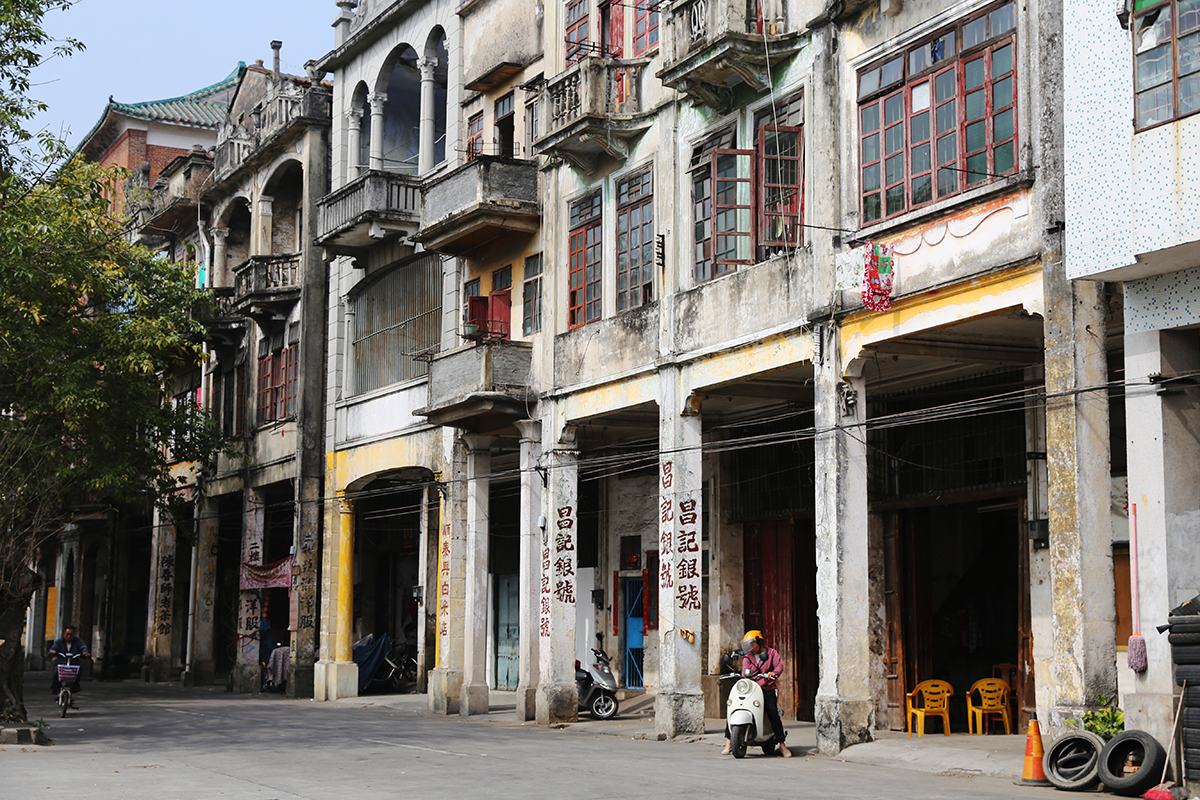
Qilou, also known as Tong Lau, are a unique style of architecture that became hugely popular throughout many regions in southern China, such as Guangdong province, Fujian province, Macau, and Hong Kong, during the late 19th century. The style originated from the bustling city of Guangzhou, which was a commercial port used frequently for foreign trade. The foreign influence on this style of architecture is palpable, as it resembles a perfect intermingling of traditional Chinese and Western styles of architecture. Earlier Qilou tend to exhibit more Edwardian or Neoclassical characteristics, while the later Qilou, particularly those in Hong Kong, were heavily influenced by the Bauhaus movement.
In terms of structure, the majority of Qilou are two to four storeys in height and have a balcony on the upper floors that extends into the street. The balconies of neighbouring Qilou join together in order to form a shaded corridor over the sidewalk itself. From the exterior, the upper floors are supported by a series of brick pillars and the windows are generally French in style. They were initially designed for both commercial and residential use, with the ground floor being used by small businesses and the upper floors typically occupied by the shopkeepers’ family.
Guangdong Province and Fujian Province
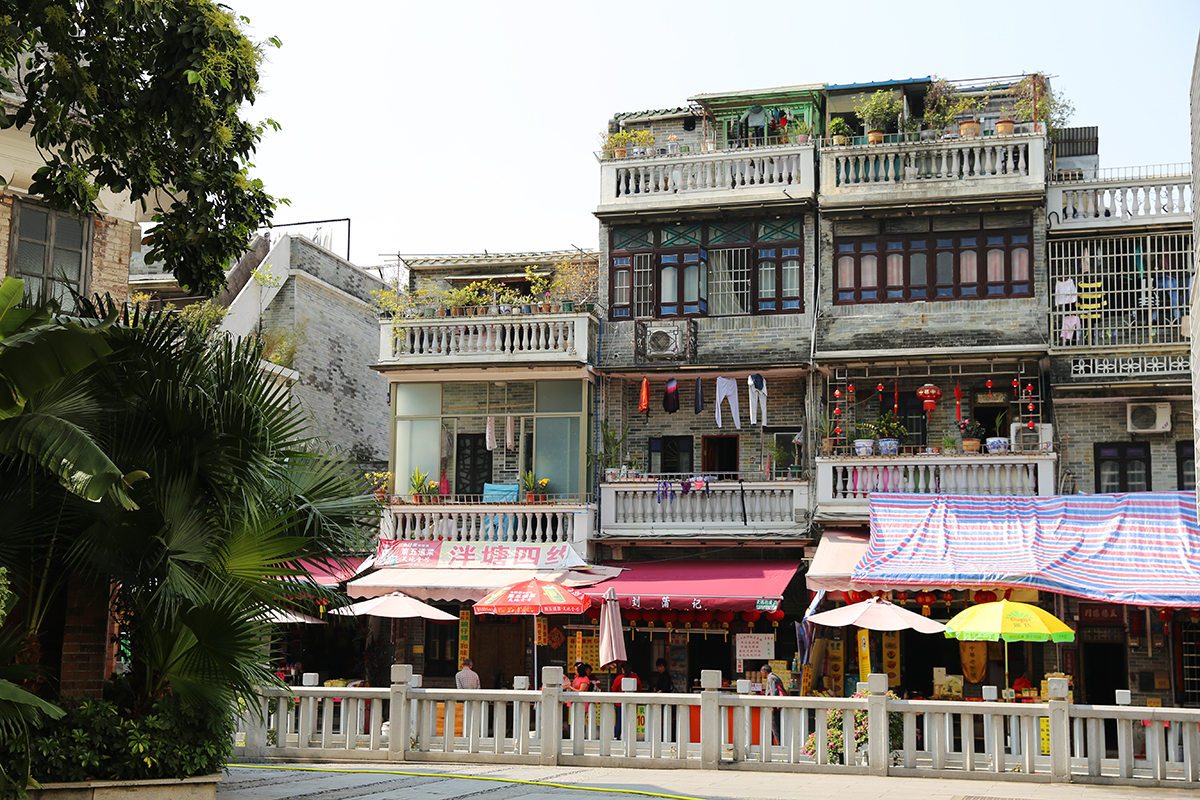
The history behind the early Qilou in the provinces of Guangdong and Fujian is far from glamorous. Following a series of invasions by foreign powers, such as the First and Second Opium Wars, certain parts of China were forced to open for trade, in particular the coastal areas of Guangdong province and Fujian province. In 1759, Guangzhou in Guangdong province became home to the first official foreign trading port, while the city of Xiamen in Fujian province established maritime trading with British Singapore in 1821 and the provincial capital of Fuzhou opened to foreign trade in 1842. That being said, it seems that every cloud has a silver lining!
The foreign trading paths opened in these areas allowed thousands of local Chinese people to emigrate overseas, which meant they could escape the impoverished regions where they lived. This provided them with access to untold business and employment opportunities, which led to several emigrants becoming extremely rich. These emigrants then invested in their hometowns by building lavish and luxurious Qilou for their families.
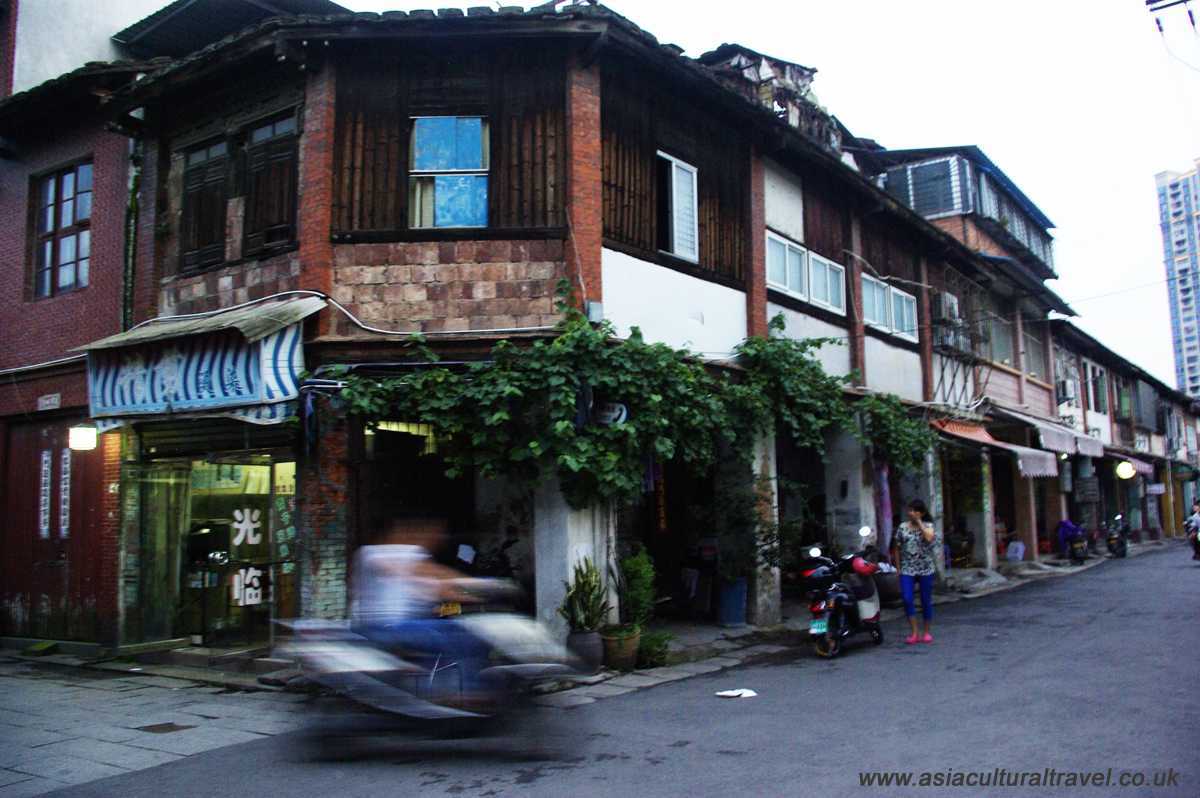
The earliest Qilou were masterminded by these wealthy businessmen to serve as stylish shops, so you’ll find many of them in the old business sector of Guangzhou, Chaoshan, and Zhangzhou. While the Qilou in Guangzhou and Chaoshan of Guangdong province exhibit more Western features, the ones found in the city of Zhangzhou in Fujian province were built in a far more traditionally Chinese style, since Zhangzhou was not subjected to as much Western influence. The town of Chikan in Guangdong province is particularly famous for its beautifully preserved Qilou, most of which line the banks of the Tan River.
Hong Kong
While early Qilou in Hong Kong generally resemble those found in the provinces of Fujian and Guangdong, the ones that were built after World War II are far simpler in design. They were primarily intended to deal with the post-war baby boom and sudden influx of immigrants from mainland China. The elaborate iron balconies that were typical of older Qilou were replaced by cheaper concrete ones and the roofs were often flat with an open terrace, which provided additional residential space. In a similar vein, delicate wooden French windows gave way to less aesthetically pleasing but infinitely more cost effective stainless steel windows.
The upper floors of these Qilou were partitioned off so that they could house more than one family or several tenants, which resulted in increasingly smaller living spaces. During the 1970s and 1980s, air conditioning units and clothes racks were added in order to accommodate the needs of a modernising society. It was during this period that the emblematic neon shop signs of Hong Kong were also added to these Qilou.
Nowadays, the largest concentration of Qilou can be found on Wing Lee Street, which is known as the last remaining Qilou street in Hong Kong. There are 12 Qilou that line this street and they all date back to the 1950s. The street’s greatest claim to fame is that it was used as a set for the Chinese film Time, the Thief, which won the Crystal Bear Award at the Berlin Film Festival in 2010. Don’t worry; although this street may be a superstar, the crowds along it are far from unbearable!
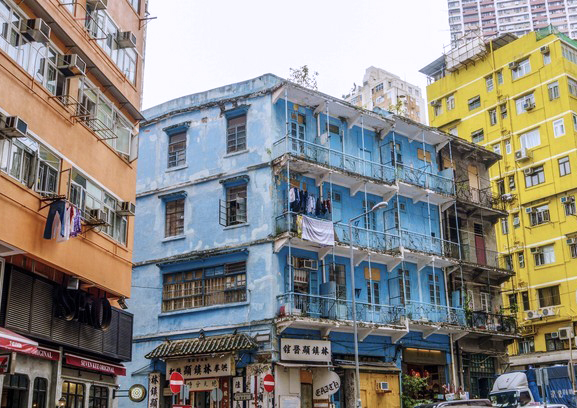
There are a number of individual Qilou in Hong Kong that have also skyrocketed to fame, thanks predominantly to investment from various businesses. The Lui Seng Chun, for example, is a Qilou that was converted into a popular traditional Chinese medicine clinic in 2008 and became the Hong Kong Baptist University School of Chinese Medicine. It is now home to a delightful herbal tea shop on its ground floor, as well as a small exhibition that contains photographs of the old Lui Seng Chun.
Similarly, a four-storey Qilou housing cluster known as the Blue House, which was built during the 1920s, has recently been renovated. You may be surprised to hear that its distinctive blue colour was not a deliberate aesthetic choice by its designer, but was simply the only colour of paint that the decorators had left! In the 1950s and 1960s, it served as the kung-fu studio for Lam Sai-wing, a student of the nationally renowned Cantonese folk hero and kung-fu master Wong Fei-hung.
Macau
The majority of remaining Qilou in Macau can be found on Avenida de Almeida Ribeiro near the Largo do Senado. They are generally considered to be better preserved than the ones in Hong Kong, as they were regularly restored rather than being demolished to make way for newer buildings. Since Macau was a Portuguese colony, these Qilou unsurprisingly exhibit a number of features that are typical of Portuguese colonial architecture. Nowadays, these Qilou are no longer occupied and have instead been entirely repurposed for commercial use.
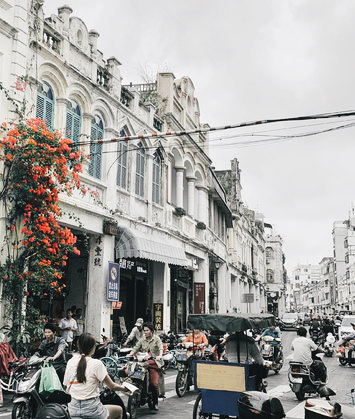
Hainan Province
While many of the Qilou on the island of Hainan have fallen to ruin, the ones located in the cities of Haikou and Wenchang have been beautifully preserved as a result of renovation campaigns supported by the local government. In Haikou, the most famous area to visit Qilou is along the historic Bo’ai Road at the heart of the city, which is often referred to locally as “Qilou Old Street”. Much of the road has been converted into a pedestrianised zone, meaning visitors can admire the Qilou at their leisure without the fear of the tumultuous inner city traffic! At night, the stunning facades of these buildings are illuminated by a series of lights, which adds to the vibrant atmosphere of the area. Similarly, in the city of Wenchang, all of the Qilou along Wennan Old Street have been restored to their former glory. Unlike Haikou, however, their facades have not been repainted and still maintain their traditional grey colour.
Explore more about Qilou with us on the unique travel: Explore the Ancient Fortresses of Southeast China